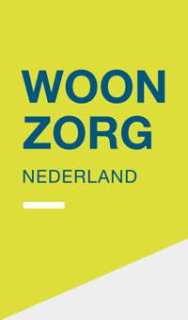Applied Research
The research group investigates how the built environment can stimulate residents' self-reliance by developing 'future friendly' and 'reactive' living environments. The needs and lifestyle of the end users are central to this, so that they can shape their wishes and preferences.

The research is characterized by a multidisciplinary approach in the field of construction and healthcare, with an emphasis on the built living and living environment of the elderly. Different knowledge domains are brought together to arrive at integrated spatial concepts and applications for a sustainable and healthy living environment. We follow the approach of Corporate Social Responsibility (SRI), in which a people-oriented and integral approach is central. Methods from Design Thinking and Participatory Design are used as a basis for this, which are embedded in social gerontological theories & innovation sciences.
We distinguish 3 lines of research
Method
The research group uses the Empathetic Design Method of Mohammadi (2017) for research. This design method combines the well-known living lab methodology – in which spatial interventions, products, services and technologies are developed, prototyped and validated in real-life living labs – with ethnographic research methods. As a result, designers and researchers are even better able to understand the world of end users and to really feel and experience them with them. The Empathetic Design Method distinguishes four steps that are always followed in close collaboration with the target group: Exploring, Translating, Processing and Validating.
Explore
The 'Explore' step focuses on collecting both theoretical and experiential knowledge from the (future) users of, for example, a space, product or service. These experiences are converted by designers into design concepts in the 'Translate' step. This involves collaboration with the target group and taking the context of future usage practice into account as much as possible. In the 'Process' step, experimental prototypes of the innovation(s) are then realized in a process of co-creation with the target group. Finally, in the last step, 'Validate', it is checked whether the intervention achieves the desired effect and whether the wishes and needs of the users are met.
Cooperation
The lectorate (together with the professional field and education) conducts multidisciplinary, empirical scientific and always practice-oriented research, for example by intensively collaborating with other colleges and universities, social organizations (housing corporations) and the business community. In various research and promotion projects, for example, we set up together with housing cooperatives or senior citizens' associations. Where possible, students contribute to our research. In addition, AiH contributes to the courses of the Built Environment Academy of HAN.
technology and society
International competition, high technology and sustainability requirements play an increasingly important role for companies. They therefore strive for innovative, efficient and effective products and services. Technology and Society partnership works on supporting and innovative research projects for the professional field. Along with education. We contribute to the quality of education, the innovative strength of professional practice and a sustainable society.



